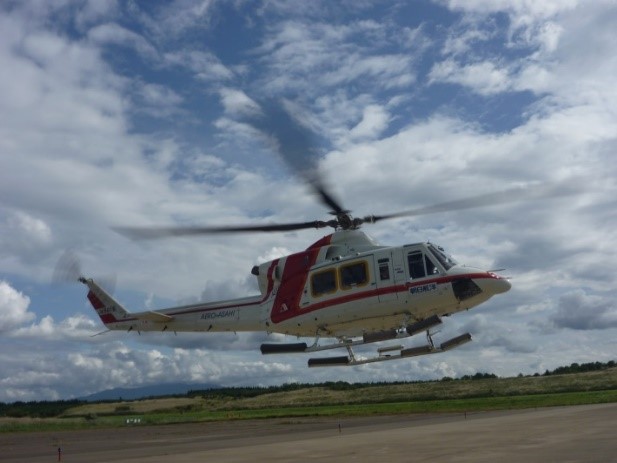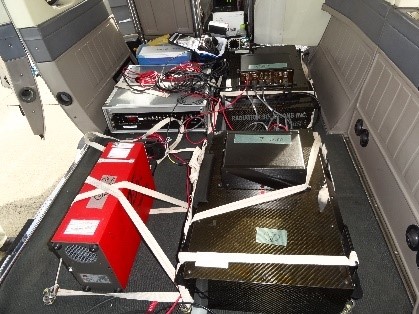The Japan Atomic Energy Agency (JAEA) has developed the aerial radiation monitoring technique with a manned helicopter to survey environmental radiation distribution around the Tokyo Electric Power Company Fukushima Daiichi Nuclear Power Station (FDNPS) since FDNPS accident triggered by the Pacific coast of Tohoku Earthquake occurred on March 11, 2011. For these several years after the accident, the JAEA has continuously performed areal radiation monitoring, has revised its technique and has consolidated the system. The measurement results are displayed on a map, and the reduction of dose rate is easy to understand visually.The purpose of the aerial radiation monitoring around FDNPS was to understand the change over time of deposited radionuclide.
The current measurements include the effects of gamma rays from the natural radioactive nuclides. For high dose areas from the radioactive cesium, the effects from the natural radioactive nuclides can be neglected; however, for low-dose areas from the radioactive cesium, any effects from natural radioactive nuclides should be taken into account. If the background environmental radiation has been measured beforehand, the real radiation level will be correctly estimated by subtracting its background. Areal monitoring in the normal time has also other merits such as to obtain information on (1) air traffic control information in the region and (2) dangerous places for flights over the region. Based on the above, the Nuclear Emergency Assistance and Training Center (NEAT) of the JAEA has undertaken background monitoring around nuclear power plants under the contract research entrusted from Nuclear Regulation Authority of Japan. In FY2015, the NEAT carried out background monitoring in the vicinity of Sendai Nuclear Power Station (NPS) of the Kyushu Electric Power Company. After that, two places (Ohi and Takahama NPS of the Kansai Electric Power Company, Ikata NPS of the Shikoku Electric Power Company) in FY2016, around three places (Tomari NPS of the Hokkaido Electric Power Company, Kashiwazaki-Kariwa NPS of the Tokyo Electric Power Company, Genkai NPS of the Kyushu Electric Power Company) in FY2017, around two places (Hamaoka NPS of the Chubu Electric Power Company, Shimane NPS of the Chugoku Electric Power Company) in FY2018, two places (Shika NPS of the Hokuriku Electric Power Company, Higashidori NPS of the Tohoku Electric Power Company and Rokkasho Reprocessing Plant of the Japan Nuclear Fuel) in FY2019, two places (Mihama NPS of the Kansai Electric Power Company and Tsuruga NPS of The Japan Atomic Power Company, and research reactors of Atomic Energy Research Institute in Kindai University and Institute for Integrated Radiation and Nuclear Science in Kyoto University) in FY2020, one place (Ohi and Takahama NPS of the Kansai Electric Power Company) in FY2021, two places (Ikata NPS of the Shikoku Electric Power Company, Mihama NPS of the Kansai Electric Power Company and Tsuruga NPS of The Japan Atomic Power Company) in FY2022 and one place (Sendai NPS of the Kyushu Electric Power Company) in FY2023 were carried out.
In addition, we perform aerial radiation monitoring in cooperation with the Nuclear Regulatory Agency and Ministry of Defense in national comprehensive disaster prevention drills, etc., and conduct training to quickly grasp the radiation dose over a wide area in an emergency.


Picture : Example of helicopter in use, and Example of installation status of measuring equipment